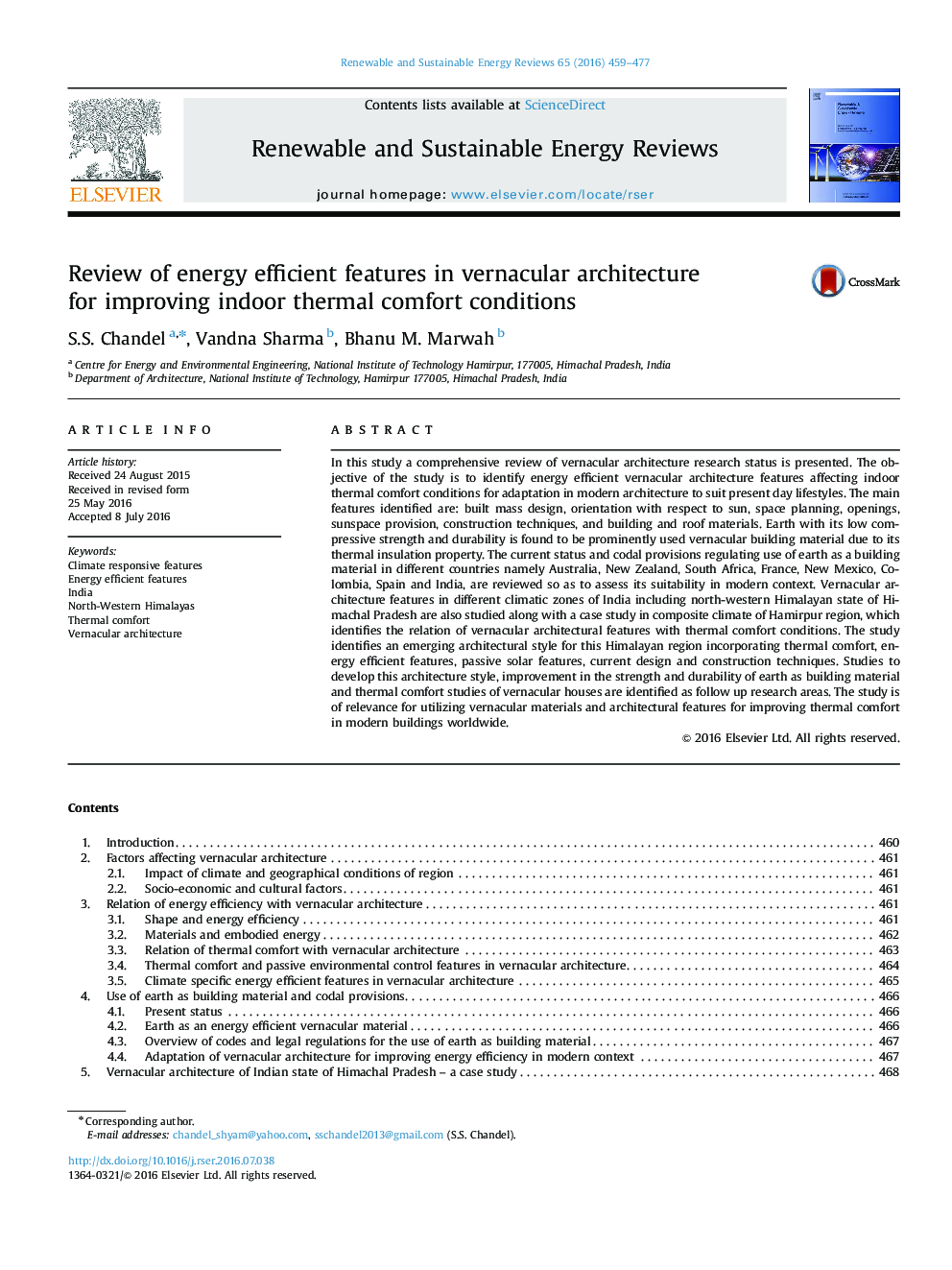| Article ID | Journal | Published Year | Pages | File Type |
|---|---|---|---|---|
| 8112855 | Renewable and Sustainable Energy Reviews | 2016 | 19 Pages |
Abstract
In this study a comprehensive review of vernacular architecture research status is presented. The objective of the study is to identify energy efficient vernacular architecture features affecting indoor thermal comfort conditions for adaptation in modern architecture to suit present day lifestyles. The main features identified are: built mass design, orientation with respect to sun, space planning, openings, sunspace provision, construction techniques, and building and roof materials. Earth with its low compressive strength and durability is found to be prominently used vernacular building material due to its thermal insulation property. The current status and codal provisions regulating use of earth as a building material in different countries namely Australia, New Zealand, South Africa, France, New Mexico, Colombia, Spain and India, are reviewed so as to assess its suitability in modern context. Vernacular architecture features in different climatic zones of India including north-western Himalayan state of Himachal Pradesh are also studied along with a case study in composite climate of Hamirpur region, which identifies the relation of vernacular architectural features with thermal comfort conditions. The study identifies an emerging architectural style for this Himalayan region incorporating thermal comfort, energy efficient features, passive solar features, current design and construction techniques. Studies to develop this architecture style, improvement in the strength and durability of earth as building material and thermal comfort studies of vernacular houses are identified as follow up research areas. The study is of relevance for utilizing vernacular materials and architectural features for improving thermal comfort in modern buildings worldwide.
Related Topics
Physical Sciences and Engineering
Energy
Renewable Energy, Sustainability and the Environment
Authors
S.S. Chandel, Vandna Sharma, Bhanu M. Marwah,
